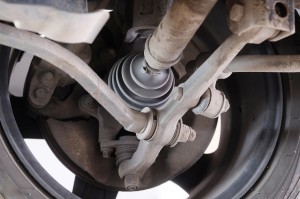Discover the Drivetrain That Works for You
Do you know the four drivetrain types? If not, it’s a good idea to understand them before you purchase your next vehicle. Each has advantages and disadvantages that may affect your finances or your travels. Have a look at the following drive train types and decide which one is best for you.
Front-Wheel Drive (FWD)
In FWD vehicles, power from the engine is transferred to the front tires. This driveline uses fewer parts than an AWD or a 4WD and, as a result, has a lower sticker price. However, because the front wheels do most of the work, the front tires and brakes wear out faster than those on the rear. This type of drive train isn’t very suitable for track racing or off-road travel.
Rear-Wheel Drive (RWD)
When the power is transferred to the rear tires instead of the front, by means of a driveshaft, the vehicle is rear-wheel-drive. This improves acceleration, cornering and braking performance; although, sometimes only experienced drivers can harness the full capability of this drive train type. For many drivers, all-wheel drive systems allow better track performance. The existence of the drive shaft reduces interior space and increases the price of the vehicle. Both front-wheel drive and rear-wheel drive vehicles can be called 2WD (two-wheel drive).
All-Wheel Drive (AWD)
The power is distributed to all four tires all the time when a vehicle has AWD. The driver doesn’t have to move a lever or engage the transfer case to make it work. But this drivetrain adds weight, complexity and cost to the vehicle. It’s useful for a driver who sometimes needs to drive in low-traction situations due to ice or sand. It’s also used in high-performance road cars to improve traction.
Four-Wheel Drive (4WD)
Four-wheel drive delivers power to all four wheels when the driver requests it. Sometimes it’s engaged all of the time, but usually it can be disengaged. If a car’s 4WD can be turned off, you shouldn’t turn it on unless you’re navigating difficult terrain, such as steep hills, streams, snow or rocks. Just like AWD, it’s more expensive to insure and maintain. With some 4WD vehicles, the differentials can be locked, ensuring less energy is wasted on wheels with no traction.
Have you decided which vehicle you need? When it’s time to get quotes, make sure you come to BuyingAdvice.com. We gather the quotes you need, from your local dealers, so you can save time. Click here to learn more.
Copyright 2024 BuyingAdvice.com, INC. All rights reserved. This material may not be published, rewritten, or redistributed.


